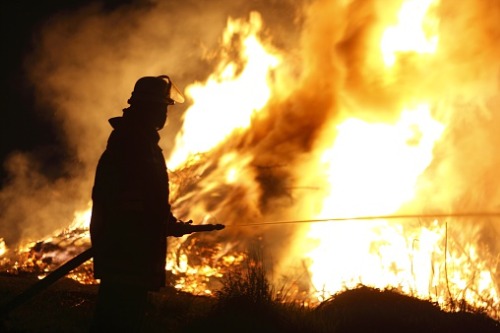
The period between the Summer of 2019 and the summer of 2020 marked the most challenging time for school communities in living memory.
The tragic aftermath of Australia’s Black Summer bushfire disaster of 2019-20 saw more than 16.5 million hectares of land scorched, 3,500 homes destroyed and 450 lives lost. It didn’t take long before the terrible event was confirmed as the nation’s worst bushfire.
Around the same time, parts of the country were battling one of the most severe droughts on record, resulting in desperate water shortages across large parts of NSW and southern Queensland. A paper by the University of Melbourne suggests the drought was the worst in more than 800 years.
Then came the worst pandemic to befall the world in a century, prompting the world’s first globally synchronised lockdown and ‘economic hibernation’. Subsequently, schools were closed and learning shifted online.
Just as the dust was settling from the pandemic and restrictions were being lifted, NSW was hit with its worst flood in nearly 100 years, causing the closure of hundreds of schools across the state and jeopardising entire communities.
For schools across Australia, these events demonstrate the importance of effective crisis management and the difference this can make to staff, students and their families.
During the 2019/20 bushfires, the NSW Government established a ‘Response and Recovery’ team to ensure the safety of staff and students, and the continuation of school operations across the state.
Impacted schools benefitted from bespoke, targeted mental health support for as long as they felt necessary, along with a freeze on staffing numbers despite fluctuating enrolments to ensure stability for students and additional professional development for staff.
Last week, Education Minister Sarah Mitchell and Deputy Premier John Barilaro, announced that the ‘Response and Recovery’ team would become a permanent fixture within the NSW Government to ensure schools get rapid support in the event of future crises.
“The past few years have taught us to expect the unexpected and just how important it is to be well prepared for emergencies and to remain safe throughout crises and natural disasters,” Barilaro said.
“Kids in the regions have been exposed to the impact of relentless drought, unprecedented bushfires and most recently, floods, and we need to make sure schools are supported to continue to provide a top-quality education, regardless of their situation”.
The newly established Response and Recovery team will work to assist schools with tangible teaching methods, remote learning techniques, evacuation protocols and safety measures to build resilient schools of the future.
“It’s critical for the NSW Government to take what we have learnt from recent experiences and be ready to act and respond when our communities need help”.
Mitchell announced the new team while hearing from representatives from 151 bushfire affected schools at the Phoenix Conference; a gathering of school leaders, students and recovery response experts from a number of organisations.
“The Phoenix Conference is an amazing opportunity for school leaders to finally gather together in person to share their experiences,” she said.
“It’s also a chance to acknowledge the work that has been done by school communities to ensure our students were able to continue to get a high-quality education in some of the most challenging circumstances over the last 18 months”.


